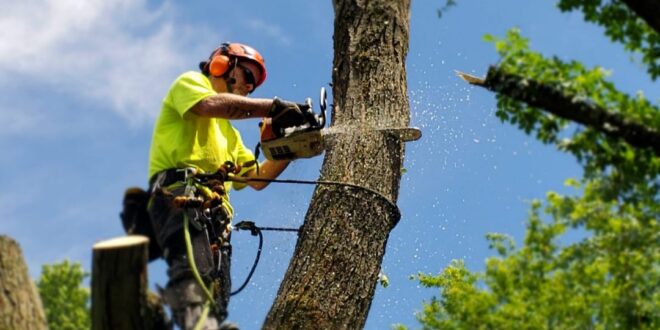Do you have an old tree in your backyard that’s just an eyesore at this point? Did you remove the swing from it because you’re scared that the branch’s going to fall off? Is the crown more patchy than LeBron’s hairstyle? Is the whole tree looking like Treebeard – the mightiest of all Ents? If the answer to any of these is a resounding yes – you need to cut that tree down.
Now, we understand that cutting a tree down is easier said than done. Actually, that’s why we’re here today. We wanted to discuss with you all the safe ways to remove the tree from your backyard without making a mess, breaking any laws, or potentially ruining your neighbour’s rooftop. If that sounds like something you’d be interested in – let’s talk for a bit.
Table of Contents
How Do You Know It Is Up Ready For Removal?
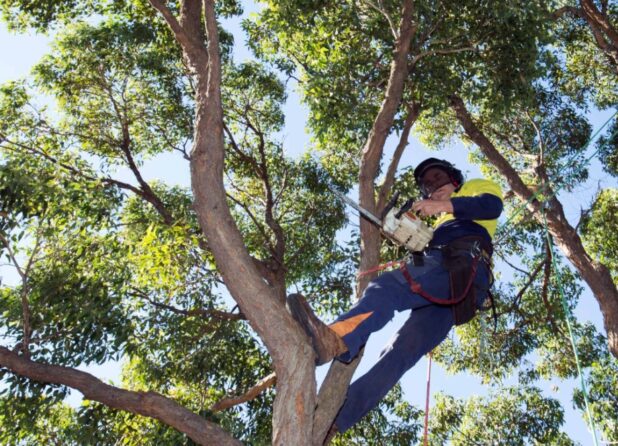
Before we get into all the safety measures, protocols, and proper ways to remove a tree, we first need to take a good look at what makes a tree suitable for removal. So, let’s start with the basics.
It’s Dead
Circling back to our LeBron and LOTR analogy, if the tree in your backyard looks anything like that – it’s probably dead. Trees with messed up trunks and lousy crowns are usually at the end of their life or have already died, and at that point – they’re nothing but a safety hazard. If that’s the case, you’re not only free but are actually advised to remove it.
It’s Sick
Identifying a sick tree can be a little bit tricky unless you’re an arborist. You’re going to notice obvious signs of decay like dying branches, patchy crowns, dying leaves, and so on. However, those aren’t definitive. You’re probably going to need an expert opinion on this one, as sometimes, a tree is sick but also curable. So don’t go swinging the axe just yet.
It’s Leaning
While it is undeniable that a leaning tree might look cool, what’s also undeniable is that it is a safety hazard. Unless it grew that way in search of sunlight, it is usually a great candidate for removal. Most of the time, trees that grew straight and then leaned to the side did that under the influence of wind or other factors and is a liability as such. However, don’t think that just because it’s leaning, you don’t have to hire professional tree removal services.
As our friends over at https://www.findlocaltreeservice.com/ have taught us – a leaning tree won’t necessarily fall where you’d expect it to fall.
Now, there are some other reasons why you’d want to remove an old piece of wood from your backyard, but let’s leave it at that.
How To Safely And Properly Remove A Tree From The Backyard
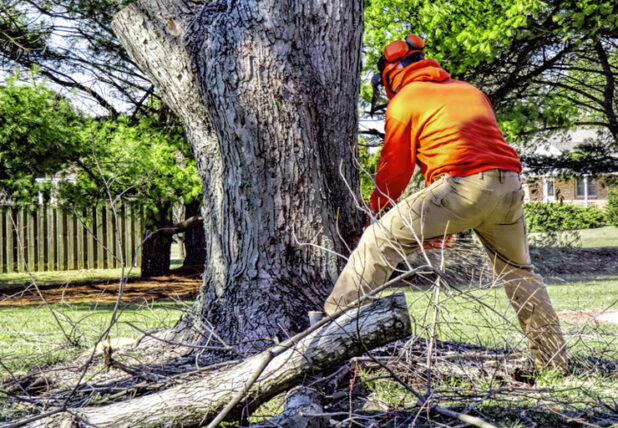
It’s time to focus on the important part of this article – safe removal. As you’re probably aware, you can just grab an axe and chop down that old oak you have in your backyard. There are two basic rules to be followed.
Figure Out Can You Even Remove It?
Believe it or not, just because a tree is within the confines of your backyard doesn’t grant you permission to cut it down or remove it. Some species are protected under the NALL (Natural Assets Local Law). Those species can’t be touched – just like MC Hammer.
Jokes aside, if the tree is protected or of great significance to the area – it might be protected.
Apart from that, certain species can be home to some wildlife, which would also make it illegal to remove, and so on.
On top of all that, there are even size restrictions when it comes to removals and chop-chops. For instance, if the circumference of a trunk is greater than 40 cm – you might need a permit.
Call For Professional Help
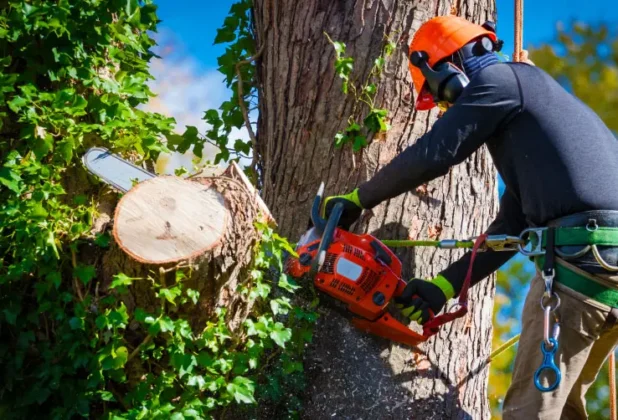
Forget about taking matters into your own hands – there are enough funny clips on the internet of failed tree removal attempts. You don’t need to add to the collection. Instead, call for professional help. They’ll make sure that old oak’s out of the way, and you probably won’t even need to clean up after them. Here’s how they’ll do it.
1. Clean Up The Area
First up, a professional crew will clean up the surrounding area, leaving enough room for the entire tree to lay flat on the ground. They might even instruct you to do this, as it’s usually a pretty simple task, but more often than not – they’ll be the ones to move things out of the way.
2. Examination
To be fair, this will be the first part of the process, as they’ll have to check out the tree. It’s type, size, the optimal place to land, and so on. They’ll have to account for a few things, especially if the tree’s dead, as dead ones tend to fall in whichever direction they please.
3. Create An Escape Route
Even with professionals, things don’t always go as planned. So, before they even begin hacking the trunk with an axe, they’ll try and come up with an escape route or two, just in case things go south.
4. Come With All The Necessary Equipment
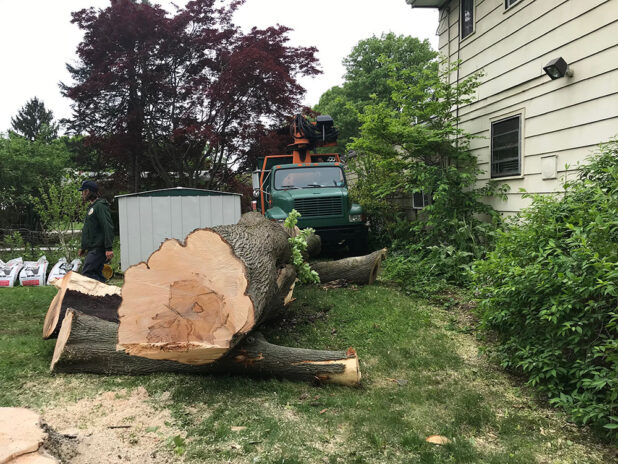
Depending on the size of the veteran you’re about to cut down, different equipment might be needed. Sometimes you’ll need a hacksaw, and sometimes you’ll need just an axe. Other times, you’ll need a chainsaw, and sometimes, you might need a big ol’ piece of machinery that’ll pluck that old-timer right out of the ground.
5. Remove The Tree
Now that everything’s all set up – it’s time to start the removal. Whether it’s outright removal or cutting, the pros will do it flawlessly. If it’s a cut – they’ll start with a V-shaped 45-degree undercut at the bottom of the side the tree’s supposed to fall on.
Then, they’ll start the back cut. As you can tell from the came, this will be a cut from the opposite side, roughly around two inches above the undercut, which would result in a tree falling in the desired direction.
Conclusion – The Final Step
The final step before the tree is brought down is to yell “timber” or “lumber”.
You can’t cut a tree without yelling either “timber” or “lumber” – it’s the law.
Once that’s over with, the fallen warrior will be either cut up into pieces or hauled away – whatever you decide. But, your backyard will be timber and mess-free.
 World Magazine 2024
World Magazine 2024
